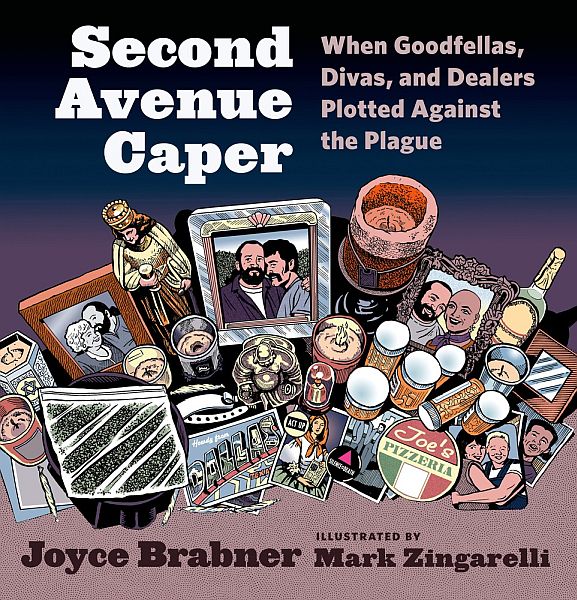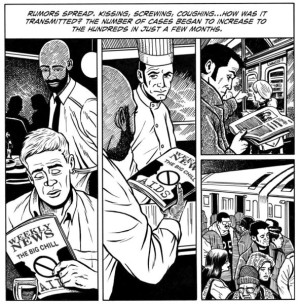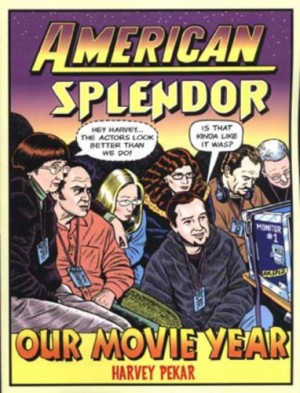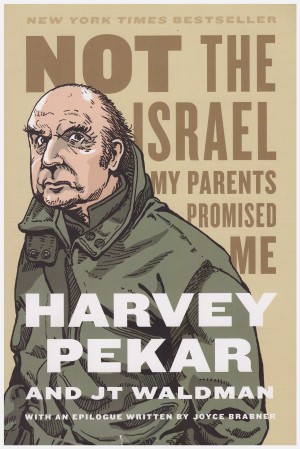Review by François Peneaud
Second Avenue Caper is the story, as told by one of the participants, of the struggle to help early American AIDS sufferers, in ways which included smuggling unrecognised medicine into the country.
Writer Joyce Brabner and artist Mark Zingarelli bring back to life that terrifying period of the early 1980s when nobody knew much about a weird disease killing gay men. Brabner’s friend Raymond, a nurse, found himself earning welcome extra money when he started a small pot business thanks to a shady doctor from his workplace. That connection would become a matter of life and death when Raymond began to wonder what these gay men were dying of. After much research, he and like-minded friends heard about Ribavirin, a medical drug which could be effective, but was not yet legal in the USA. It was, though, available in Mexico–right where the shady doctor had his own contacts. A series of expeditions were mounted, culminating in the use of a van with hidden compartments, loaned by the shady doctor’s drug friends. Between that and the pot (also used to alleviate the pains of the sick), it can be said that an unlikely alliance between drug pushers and queer activists took place during that period. This has its nice aspects, but would have not been necessary if the general population and its elected officials had taken the measure of the epidemic.
Brabner, whose younger self appears in the narrative, builds a portrait of a group of friends who come together when faced with a crisis more grievous than they could have imagined. The tone of the graphic novel manages to celebrate life without concealing the death and desolation that permeates that period for the gay community. Another important thing to note: the group of friends is not comprised only of gay men, and especially not only of white men. Genders, skin colours and sexual orientations are all mixed there, in a testament to the importance of collaboration.
Mark Zingarelli does a solid job here, his storytelling simple and clear enough for a non-comics reading audience to absorb the narrative. He works a lot on facial expressions, a plus for a graphic novel where a number of characters are drawn from photos, requiring that features need to be reinterpreted to avoid a wooden effect.
The structure makes clear that, while this is non-fiction, it is also the story of very real people, with Joyce Brabner and her friend being shown at the beginning talking over what Raymond is about to tell. They reappear throughout the book, commenting on the story, sometimes with the insight of three decades, and conclude the book in a way that is uplifting without being saccharine.
A lot of books have been written about that period and that particular struggle; some fiction, some non-fiction, but not many graphic novels on that theme have been published, and even less accounts from people who’ve lived it. Second Avenue Caper is a welcome addition to the growing list of graphic novels concerned with the real world and its ambiguities. The fact that the end result is so full of human warmth should make it mandatory reading for anyone interested in the (personal) history of the unfortunately ongoing fight against AIDS.





